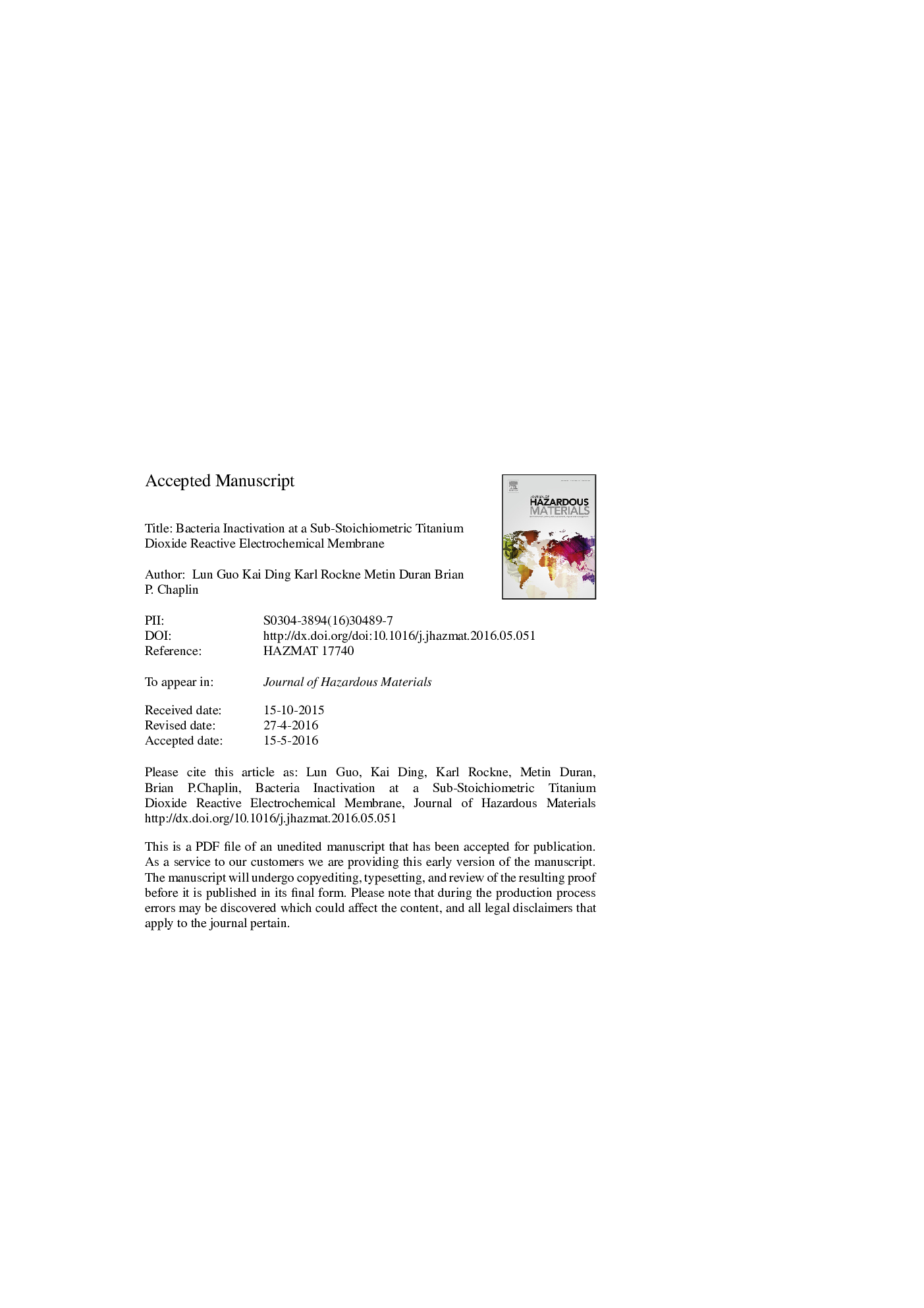| Article ID | Journal | Published Year | Pages | File Type |
|---|---|---|---|---|
| 4980170 | Journal of Hazardous Materials | 2016 | 36 Pages |
Abstract
This study investigated the use of a sub-stoichiometric TiO2 reactive electrochemical membrane (REM) for the inactivation of a model Escherichia coli (E. coli) pathogen in chloride-free solutions. The filtration system was operated in dead-end, outside-in filtration model, using the REM as anode and a stainless steel mesh as cathode. A 1-log removal of E. coli was achieved when the electrochemical cell was operated at the open circuit potential, due to a simple bacteria-sieving mechanism. At applied cell potentials of 1.3 and 3.5 V neither live nor dead E. coli cells were detected in the permeate stream (detection limit of 1.0 cell mLâ1), which was attributed to enhanced electrostatic bacteria adsorption at the REM anode. Bacteria inactivation in the retentate solution increased as a function of the applied cell potential, which was attributed to transport of E. coli to the REM and stainless steel cathode surfaces, and direct contact with the local acidic and alkaline environment produced by water oxidation at the anode and cathode, respectively. Clear evidence for an E. coli inactivation mechanism mediated by either direct or indirect oxidation was not found. The low energy requirement of the process (2.0-88 W h mâ3) makes the REM an attractive method for potable water disinfection.
Keywords
Related Topics
Physical Sciences and Engineering
Chemical Engineering
Chemical Health and Safety
Authors
Lun Guo, Kai Ding, Karl Rockne, Metin Duran, Brian P. Chaplin,
